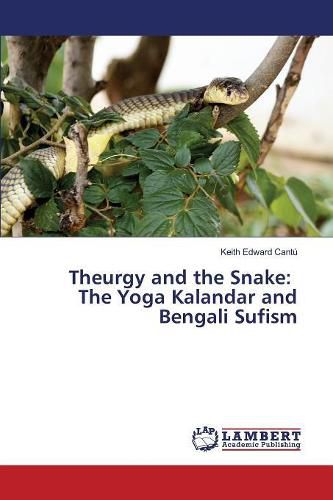Readings Newsletter
Become a Readings Member to make your shopping experience even easier.
Sign in or sign up for free!
You’re not far away from qualifying for FREE standard shipping within Australia
You’ve qualified for FREE standard shipping within Australia
The cart is loading…






This title is printed to order. This book may have been self-published. If so, we cannot guarantee the quality of the content. In the main most books will have gone through the editing process however some may not. We therefore suggest that you be aware of this before ordering this book. If in doubt check either the author or publisher’s details as we are unable to accept any returns unless they are faulty. Please contact us if you have any questions.
A radically alternative vision of the fakir is given in surviving medieval (Bng. madhya-yug, Middle Age ) and pre-modern textual sources that predate and coincide with the colonial period, such as the widely influential 17th century Yoga Kalandar text as well as Baul oral traditions deeply influenced by this text’s cosmology. This book aims therefore to fulfill three key objectives: 1) to historically situate the Yoga Kalandar text and its practitioners; 2) to describe the distinctly yogic and tantric aspects of its theology, with specific reference to the way the text harmonizes Sufi and Neoplatonic hypostases and ritual theurgy with Samkhya cosmology; and 3) to describe how the text’s cosmology was integrated in later colonial and modern forms of indigenous Bengali mystical poetry, especially the Baul songs of Lalan Fakir that make numerous creative references to the practices outlined in the Yoga Kalandar and, in a sense, even transcend the text’s limitations. As an appendix for reference, a new English simple translation of this text (from Bengali and French critical editions) is provided.
$9.00 standard shipping within Australia
FREE standard shipping within Australia for orders over $100.00
Express & International shipping calculated at checkout
This title is printed to order. This book may have been self-published. If so, we cannot guarantee the quality of the content. In the main most books will have gone through the editing process however some may not. We therefore suggest that you be aware of this before ordering this book. If in doubt check either the author or publisher’s details as we are unable to accept any returns unless they are faulty. Please contact us if you have any questions.
A radically alternative vision of the fakir is given in surviving medieval (Bng. madhya-yug, Middle Age ) and pre-modern textual sources that predate and coincide with the colonial period, such as the widely influential 17th century Yoga Kalandar text as well as Baul oral traditions deeply influenced by this text’s cosmology. This book aims therefore to fulfill three key objectives: 1) to historically situate the Yoga Kalandar text and its practitioners; 2) to describe the distinctly yogic and tantric aspects of its theology, with specific reference to the way the text harmonizes Sufi and Neoplatonic hypostases and ritual theurgy with Samkhya cosmology; and 3) to describe how the text’s cosmology was integrated in later colonial and modern forms of indigenous Bengali mystical poetry, especially the Baul songs of Lalan Fakir that make numerous creative references to the practices outlined in the Yoga Kalandar and, in a sense, even transcend the text’s limitations. As an appendix for reference, a new English simple translation of this text (from Bengali and French critical editions) is provided.